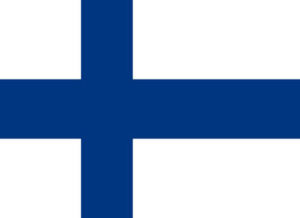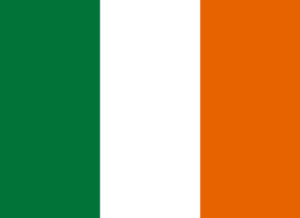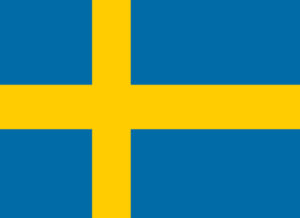Feasibility Studies
Latest research and feasibility studies compiled on the “Local Energy Communities” projects from our partners.

Feasibility study report for Finland: Analysis of cryogenic liquefaction of methane - AGERA INNOVATION O
This feasibility study reviews the viability and efficiency of the liquefaction of methane gas by the use of nitrogen. The study is a part of the Centria University of Applied Sciences lead LECo-project.

Feasibility study report for Finland: PV-System for dairy farm - ILPO WENNSTRÖM’S FARM
This report reviews the techno-economic feasibility of utilizing a PV-system for energy production on a large dairy farm in Sykäräinen Finland. The viability of the PV-system is highly dependent on the correlation between the consumption and production profiles. This feasibility study examines the dairy farm’s hourly electricity demand and the coverage of the potential solar energy generation in different scenarios.

Feasibility study report for Finland: The current state and future possibilities of Lohtaja district heating. - LOHTAJAN ENERGIAOSUUSKUNTA
This feasibility study reviews the current state of Lohtaja’s district heating and analyzes the potential for expansion. The study also presents an alternative heat production method for the current oil based heat plant in order to achieve a more environmentally friendly heat production in Lohtaja.

Feasibility study report for Finland: Replacing oil heating with renewable energy - Eskola Village Service Ltd
This feasibility study reviews alternative heating solutions for a large property owned by Eskola Village Service Ltd located in Central Ostrobothnia, Finland. The focus of this research report is to assess the suitability of heat pumps or wood-chip heating as a primary heat source for heating the Eskola property. The goal is to replace the current oil-based system with a more cost-effective and environmentally friendly heating system.

Feasibility study report for Ireland: COMMUNITY SOLAR FARM Clár Éifeactacth Fuinnimh February 2020
Captis Ltd were appointed by Clár Éifeachtach Fuinnimh (part of Comhairle Ceantar na nOileán teo), acting on behalf of Údarás na Gaeltachta, to undertake a feasibility study for a Community Led Solar Farm in Leitir Mόr Co. Galway. The feasibility study was to be funded by Interreg LECo through Údarás na Gaeltachta.

Feasibility study report for Ireland: On Anaerobic Digestion for the Dingle Peninsula
This feasibility study will assess the viability of an anaerobic digestion plant on the Dingle Peninsula. The Dingle Energy Master Plan commissioned by the Dingle Hub determined that the Dingle Peninsula consumes around 315 GWh per year. Initial feedstock analysis indicates that silage, cattle slurry, food waste, sewage sludge and fish waste could provide 305 GWh of energy to the region.

Feasibility study report for Ireland: Mohill Renewable Energy Feasibility Study - Prepared for: Western Development Commission
Energy represents a big challenge for future generations; not only mineral and fossil energy sources are being exhausted, but also GHG emissions pollute the environment and disrupt life natural cycles bringing serious irreversible impacts on earth.

Feasibility study report for Ireland: Feasibility Study on the Renewable Energy Potential, specifically micro hydro in four pre-specified locations for Toormakeady Sustainable Energy Community, Co. Mayo
The key requirement of this report is to prepare a report on the potential for micro hydro at four specific sites within the Toormakeady Sustainable Energy Community (SEC). The specific characteristics of the four sites are dealt with in this document. These include details of Catchment, Flow, Power Output and further details relevant to the individual sites…

Feasibility study report for Ireland: Gweedore Bioenergy and District Heating Scheme. - Údarás na Gaeltacht
Comharchumann Forbartha Ghaoth Dobhair (Comharchumann) is a community-based co-operative in Gweedore, Co Donegal which operates a combined community and enterprise centre. Comharchumann is proposing to form a local energy community scheme in conjunction with several other community groups within the area…

Feasibility study report for Ireland: Lisdoonvarna Failte Renewable Energy. - Western Development Commission
Overall objective: Feasibility study on the potential for renewable energy at the following sites: • Creche, Pavilion • Dance Hal, Pump House, Bath House/Spa Well • 50 acres of associated woodlands.
Specific Objectives: • Determine the potential for renewable energy considering existing & forecasted energy usage and site constraints. • Concept & preliminary design for potential renewable energy systems, and lifecycle cost analysis • Assess the need for an environmental impact assessment (EIA) and estimate costs • Review funding opportunities & recommend action plan..

Feasibility study report for Sweden: On the sustainable energy potential of LECO pilot community Porjus. - Jokkmokk municipality
he big rivers in the municipality produce about 11-13 TWh electricity per year. However, the plants belong to the governmental company Vattenfall in Stockholm and taxes are paid there. Only a small compensation for the negative impacts of hydro power plants and dams are paid to local communities by Vattenfall. The pilot Porjus is a village within Jokkmokk….

Feasibility study report for Sweden: Feasibility Study on sustainable energy potential of LECO pilot community Purkijaur
he pilot Purkijaur is a village within Jokkmokk municipality’s boundaries with about 90 inhabitants (2017). It is situated about 20 km from Jokkmokk centre. Purkijaur has been inhabited since the Stone Age and the first settler arrived in 1677. During his stay in the Lapland mountains Carl Linnaeus travelled through the village. During the early 20th century, a steamboat was established along the Little Lule River from Purkijaur to Kvikkjokk. In 1884, the famous Nordenskiöldsrace started in Purkijaur1 and since 2016, the modern ultra-skiing race Nordenskiöldsloppet has its start here.

Feasibility study report for Sweden: Feasibility Study on the sustainable energy potential of LECO pilot community Vuollerim
The pilot Vuollerim is a village within Jokkmokk municipality’s boundaries with 760 inhabitants (2017). However, in the 50s, about 1600 people lived in the village due to the high need of work force for building of the hydropower plants at the Luleå river. In Vuollerim, there are several companies and public buildings, among others kindergarden, two schools, health care, Vattenfall administration building, Community hall, restaurant, several shops and two hotels. In the map below from the land-use plan one can see that Vuollerim lies between the two rivers Lilla and Stora Luleå Älv.

Feasibility study report for Sweden: On sustainable energy potential of LECO pilot community Korpilombolo. - Jokkmokk Municipality
Pajala is a municipality with about 6000 inhabitants (2018) and an area of 7,917 km2, which is about 2% of Sweden. Pajala is located in Norrbotten County and borders on Finland to the east. 30% of the municipality’s population lives in the central town of Pajala, but there are also about 80 official villages, but only Korpilombolo, Tärendö, Junosuando, Sattajärvi, Erkheikki and Kangos haves a population of over 200 people.

Feasibility study report for Sweden: On the sustainable energy potential of LECO pilot community Hakkas
Gällivare Municipality in Norrbotten County is the third biggest in Sweden with an area of 16,818.22 km2. Gällivare Municipality also hosts an airport. Mining for iron ore, copper and gold are a key business. In 2018, Gällivare had 17,630 inhabitants, of which about 10,000 lived in central Gällivare, another 3,000 in close by Malmberget. However, this is rapidly changing as most parts of Malmberget are going to disappear due to the growing mining area. The governmentally owned company LKAB is obliged to compensate inhabitants of Malmberget by offering a new house or apartment or money for the houses which will disappear.

Feasibility study report for Sweden: On the sustainable energy potential of LECO pilot community Vuollerim
Jokkmokk is a city with the centre just over 110 km inland from the Gulf of Bothnia, situated at the Arctic Circle. Jokkmokk has ca. 5000 inhabitants on a large area of 19 474 km2. Around half of that area is National parks. The big rivers in the municipality produce about 11-13 TWh electricity per year. However, the plants belong to the governmental company Vattenfall in Stockholm and taxes are paid there. Only a small compensation for the negative impacts of hydro power plants and dams are paid to local communities by Vattenfall.
